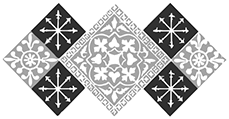Norwich, Connecticut
NORWICH, CONNECTICUT, a city and one of the county-seats of New London county, Connecticut, U.S.A., in the township of Norwich, at the point where the Yantic (which expands here in " The Cove ") and Shetucket rivers join and form the Thames. Pop. (1900) of the township, 24,637, which included that of the city (17,251, including 4597 foreign-born) ; (1910) of the city, 20,367, and of the township, 28,219. Thecity area in 1906 was 5-63 sq. m. Norwich is served by the New York, New Haven & Hartford and the Central Vermont railways, by steamers from New York and New London, and by interurban electric lines connecting with Willimantic, New London and other neighbouring places. The city is at the head of navigation on the Thames river, whose channel is 100-200 ft. wide and 14 ft. deep. The residential and older portion of the city is built on the rising ground between the valleys of the two streams; along their banks lies the business district. In Sachem Street is the grave of Uncas (d. c. 1682), a Mohegan Indian chief and friend of the early settlers; the corner-stone of the granite monument over the grave was laid by President Andrew Jackson in 1833. North-east of the Roman Catholic Cemetery, in the extreme eastern part of the city, is a monument to Miantonomo, a sachem of the Narraganset tribe of Indians, who was put to death here. Among the principal buildings and institutions are the Congregational Church, organized in 1660; the Norwich Free Academy (1856) and its Slater Memorial Hall, in which are the Peck Library and an Art Museum, and the Converse Art Annex and Art Collection; the Otis Public Library (1848); the William W. Backus Hospital; a state hospital for the insane and a state armoury. In the 18th century, and early in the igth, Norwich had a lucrative trade with the Atlantic ports and the West Indies, but later manufacturing became the most important industry; the manufactures including textiles, cutlery, firearms, paper, electrical supplies, printing presses, etc. In 1905 the factory products were valued at $6,022,391. With the city's growth in manufacturing there has been a large increase in the foreign element in the population. The municipality owns and operates the waterworks, and gas and electriclighting plants.
Norwich was settled in 1659 by colonists from Saybrook under the leadership of Captain John Mason (1600-1672), who had crushed the power of the Pequot Indians in Connecticut in 1637, and the Rev. James Fitch (1622-1702), who became a missionary to the Mohegans. 1 The tract was purchased from the Mohegan chiefs, Uncas, Owaneco and Attawanhood, and the settlement was called Mohegan until 1662, when the present name was adopted. During and preceding the War of Independence the citizens of Norwich were ardent Whigs, various members of the well-known Huntington family being among their leaders. 2 In December 1767, in reply to a message from Boston, a townmeeting forbade the use of tea, wines, liquors and foreign manufactures; in 1770 all citizens were forbidden to hold 1 The principal village of the Mohegans was originally, it seems, on the site of Norwich. Subsequently the village of Mohegan (on the W. bank of the Thames, about 3 m. S. of Norwich) became their principal settlement, and the remnant, numbering about 100 individuals of mixed blood in 1904, still live here and m the vicinity.
1 Norwich was the birthplace of Benjamin Huntington (1736- 1800), a member of the Continental Congress in 1780-1784 and 1787- 1788, a representative in Congress in 1789-1791, iudge of the state superior court in 1793-1798, and first mayor of Norwich m 1784- 1796; of Jabez Huntington (1719-1766), a patriot leader and majorgeneral of Connecticut militia during the War of Independence; of his son, Jedediah Huntington (1743-1818), also a patriot leader, a brigadier-general in the Continental Army (1777-1783), and a founder of the Society of the Cincinnati; of Jedediah's brother, Ebenezer Huntington (1754-1834), a soldier and in 1810-1811 and 1817- 1819 a representative in Congress; and of Jedediah's nephew,_Jabez Williams Huntington (1788-1847), a jurist, a representative in Congress in 1829-1834, and a member of the U.S. Senate in 1840- 1847. Samuel Huntington (1731-1796) removed to Norwich about 1758, was a member of the Continental Congress in 1776-1783 and its president in 1779-1781, was a signer of the Declaration of Independence, a justice of the supreme court of Connecticut in 1774-1784, and governor of Connecticut in 1786-1796.
intercourse with a schoolmaster who had continued to drink tea, and in 1776 a town-meeting directed the town clerk to proceed with his duties without reference to the Stamp Act. Norwich was chartered as a city in 1784. Among the early settlers in Ohio many were inhabitants of Norwich. Benedict Arnold was a native of Norwich; Mrs Lydia H. Sigourney was born here in a house still standing; Donald G. Mitchell (" Ik Marvel ") was also born here; and Norwich was the home after 1825 of William Alfred Buckingham (1804-1875), war governor of Connecticut.
See F. M. Caulkins, History of Norwich (Hartford, 1866).

Note - this article incorporates content from Encyclopaedia Britannica, Eleventh Edition, (1910-1911)


